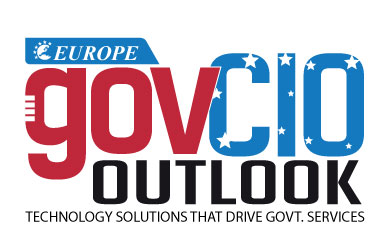Welcome back to this new edition of Gov CIO Outlook !!!✖
August - 20209GOVERNMENT CIO OUTLOOKpressing customer problem, learning quickly, and then turning their attention to scaling. They often only have the capital for 12-24 months, and their quick feedback cycles mean they are rapidly innovating. But it is highly unclear if the company, and even the product, will survive. ScaleUps have a much higher probability of being an independent company long term or a successful product family inside a larger corporation.But the government doesn't always make things easy for ScaleUps.Let me give you a DoD example: The Air Force has started doing Pitch Days to quickly award Small Business Innovation Research (SBIR) money to innovative startups. This is commendable, and the Air Force has demonstrated an ability to award contracts quickly. But the SBIR mechanism wasn't really designed for situations where growth investors own a majority of a company, or for companies with over 500 employees. A ScaleUp may have raised enough investment to where the founders own less than 50% or may have recently grown past 500 employees. Why would we disqualify those ScaleUps who are actually on the path to building a next-gen software business? Why would we make it harder for a company that is finally in a strong position to support the DoD?More fundamentally, SBIR is designed for R&D activities. At its core, SBIR is supposed to support developing technology for known mission priorities, not adopt proven commercial software. I commend the Air Force for being creative about using R&D dollars to adopt emerging technology products, rather than whitepapers from SBIR mills. But, let's figure out how to change the color of money and devote money to ScaleUps, where much of the applicable innovation is occurring.As someone who works with Insight Partners' portfolio companies--ScaleUps that are winning in the commercial marketplace--on entering and growing in the government market, I can attest to the complexity and cost of serving government customers. It's ScaleUps that have the resources and product-market fit to support the federal government. How can the government do a better job of finding and buying from ScaleUps? It's not a panacea, but other transaction authority (OTA) can help. OTA is growing in popularity as an acquisition authority outside the FAR to buy technology from small and growing companies, and it is even being used to buy software at scale--a good thing, from my perspective. For example, US Cyber Command recently signed its first production OTA with cyber threat intelligence company Recorded Future (an Insight portfolio company), after having successfully piloted the software during an earlier OTA prototype contract.In my experience, the government often has a bias towards services and building, rather than buying commercial products. You can see this when a high-profile IT transformation project, championed by the White House, puts out a solicitation to buy a technology tool--and yet the solicitation is heavy with hourly rates and other services-related topics. How the government buys, builds, and evolves software on an ongoing basis is critical to whether the government can accomplish its various missions--and ScaleUps are where the innovation is really happening at enterprise scale and scope.In my mind, it's not an overstatement to say that how the government adopts technology from ScaleUps will impact how well it achieves its ambitious and diverse missions. Let's get to work. Nick SinaiScaleUps are when innovative products and technology become enterprise-ready--i.e., truly scalable and secure. It's often the second or third version of the product, and the additional engineering, that helps meets the needs of large global enterprises
< Page 8 | Page 10 >
< Page 8 | Page 10 >
